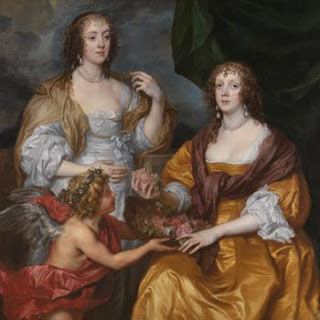Anthony van Dyck 2
(1599 – 1641
Source:
The National Gallery London
Image: After Anthony van Dyck, Portrait of
the Artist, about 1750-1825
Van Dyck
was the most important Flemish painter of the 17th century after Rubens, whose
works influenced the young Van Dyck. He also studied and was profoundly
influenced by the work of Italian artists, above all, Titian.
Van Dyck
was an extremely successful portraitist and painter of religious and
mythological pictures in Antwerp and Italy. He was also an accomplished
draughtsman and etcher. However, he is now best remembered for his elegant
representations of Charles I and his court.
Van Dyck
was born in Antwerp. A precocious artist, his first independent works date from
1615-16, when he would have been about 17. In 1621, he was in the service of
James I of England, but left to visit Italy, where he remained until 1627. His
aristocratic rendering of Genoese patricians, like the so-called 'Balbi
Children', were very well received in that city. After a second period in the
Netherlands, greater success awaited Van Dyck when he settled at the English
court in 1632. His authoritative and flattering representations of Charles I
and his family set a new standard for English portraiture to which members of
the court were keen to aspire.
Paintings
by Anthony van Dyck
Charity
Anthony van Dyck







No comments:
Post a Comment